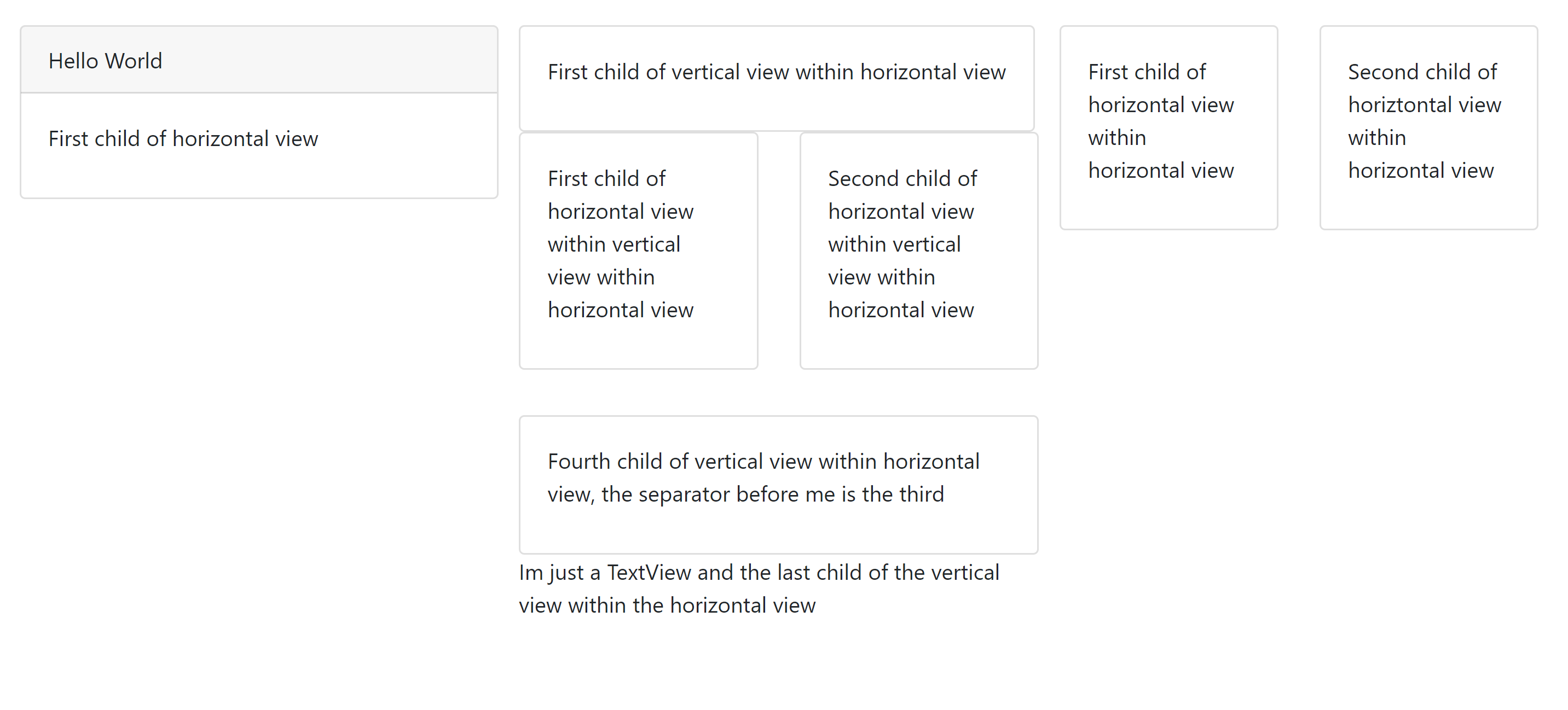Control your Visualforce layouts through code.
Deploy this repository to your scratch org using Salesforce DX or deploy the directories inside of force-app/main/src to your org.
To create the layout of your page first create a VF Page or component and add the following to your controller
public View getView() { ... // Build and return the layout for your page following the instructions below. ... } Then, in your VF Page or component add the following:
<apex:outputPanel layout="block" styleClass="container"> <apex:dynamicComponent invokeAfterAction="true" componentValue="{!View.Component}" /> </apex:outputPanel> The View interface is the basis for the entire layout. Everything that gets presented in the page is a View.
Creating a layout is all based on two different views: HorizontalView and VerticalView. These two views are container views that do not have any layout, but just control the flow of the layout. As their name implies the HorizontalView is a view that can contain views that will be displayed horizontally, and the VerticalView is a view that can contain views that will be displayed vertically.
Here is an example of what you can do when combining different views to build your layout:
public View getView() { ViewGroup horizontalViewGroup = new HorizontalView(3); horizontalViewGroup.addChild(new CardView().setHeader('Hello World').setTitle('First child of horizontal view')); ViewGroup verticalViewGroup = new VerticalView(); verticalViewGroup.addChild(new CardView().setTitle('First child of vertical view within horizontal view')); ViewGroup horizontalGrandChild = new HorizontalView(2); horizontalGrandChild.addChild(new CardView().setTitle('First child of horizontal view within vertical view within horizontal view')); horizontalGrandChild.addChild(new CardView().setTitle('Second child of horizontal view within vertical view within horizontal view')); verticalViewGroup.addChild(horizontalGrandChild); verticalViewGroup.addChild(new SeparatorView()); verticalViewGroup.addChild(new CardView().setTitle('Fourth child of vertical view within horizontal view, the separator before me is the third')); verticalViewGroup.addChild(new TextView('Im just a TextView and the last child of the vertical view within the horizontal view')); horizontalViewGroup.addChild(verticalViewGroup); ViewGroup horizontalChild = new HorizontalView(2); horizontalChild.addChild(new CardView().setTitle('First child of horizontal view within horizontal view')); horizontalChild.addChild(new CardView().setTitle('Second child of horiztontal view within horizontal view')); horizontalViewGroup.addChild(horizontalChild); return horizontalViewGroup; } Which results in a layout that looks like this:
As you can see, you can use any combination of vertical and horizontal views with other types of views (like cards, separators, and text views) to create the desired layout.
